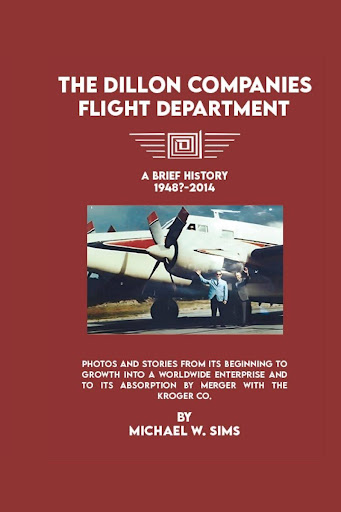In the story of American business, few tales soar quite like that of the Dillon Companies Flight Department. While most remember Dillon’s for its grocery empire, fewer are aware of the role its flight department played in shaping the company’s expansive success. Behind every takeoff and landing were the pilots and planes that helped build not just a business but a legacy.
From Dogfights to Boardrooms: The Ace Dillon Origin Story
Ray E. “Ace” Dillon Jr. was no stranger to danger. Before he ever climbed into a Beechcraft Bonanza for a grocery run, he flew 92 combat missions in a Republic P-47 Thunderbolt across Europe during World War II. Decorated with the Distinguished Flying Cross and twelve Air Medals, Ace returned home a hero. Instead of slowing down, he redirected his airborne expertise into corporate aviation.
Ace saw airplanes not as luxuries but as essential business tools. To him, they were “time machines” that could collapse the vast Kansas plains into a tight-knit web of accessible store locations and opportunities.
The Birth of a Fleet
What began with rented aircraft from Wells and Yingling evolved quickly. Dillon Companies purchased its first aircraft in the late 1940s, a yellow Beechcraft Bonanza (a color Ace came to detest). This iconic V-tailed plane marked the start of a new era. Soon, aircraft like the twin-engine Beechcraft Model 18 and the powerful Lockheed Lodestar joined the ranks, ferrying executives and goods across state lines with newfound efficiency.
Each plane came with a story. Like the time a malfunctioning cabin heater forced Ray Dillon Sr. to hold on tight as the airstair door of the Beech 18 blew off mid-air. Or when Paul Dillon and a fellow executive battled through a thunderstorm so violent that it bent one wing of their Mooney aircraft five inches higher than the other. In each case, the pilots’ quick thinking turned potential disasters into hard-earned lessons.
The Pilots Who Flew the Company Forward
Bill Haines, a Hutchinson farm boy turned ace pilot, joined the company in 1957 and became instrumental in managing and expanding the flight department. He not only flew but helped acquire planes, oversaw maintenance, and built relationships that extended from Kansas to the Philippines.
Then there was Robert “Bob” Bowman, a WWII Navy aviator who flew “Black Cats”—PBY flying boats painted black for stealth. His cool under pressure, much like that of another Dillon contract pilot, William “Billy” Powell, ensured that safety and reliability became cornerstones of Dillon’s aviation operations.
Each pilot brought something distinct. Some had experience flying military aircraft across the Pacific; others were self-taught locals with a passion for flight. Together, they created a professional network that blended grit, technical skill, and entrepreneurial vision.
Aviation as Strategy
By the 1960s, Dillon’s aircraft weren’t just for convenience; they were strategic weapons in a growing corporate war for regional dominance. Whether shuttling executives across the Continental Divide or supporting mergers like those with King Soopers and Gerbes Stores, the flight department was the hidden engine behind the company’s rapid expansion.
Take the acquisition of the Howard 500, the most sophisticated piston-engine business aircraft ever built. Powered by twin Pratt & Whitney R-2800s, the Howard could fly high, fast, and in style. While competitors were still navigating gravel roads, Dillon executives were crossing state lines at 300 plus miles per hour in comfort and class.
A Culture of Risk, Reward, and Resilience
The Dillon flight team encountered its fair share of turbulence, from mid-air fires to emergency landings. Yet it was precisely this willingness to fly into uncertainty that made the department indispensable.
And they weren’t alone. Partners like Wells Aircraft and Aircraft Engine Service provided the infrastructure that made Dillon’s flight dreams possible. These organizations maintained the fleet and participated in a broader aviation ecosystem that included airplane dealerships, custom maintenance, and global connections.
Leaving a Lasting Contrail
By the time Dillon Companies merged with Kroger in 1983, its flight department had logged decades of operational excellence.
The legacy left behind by men like Ace Dillon and Bill Haines, along with their peers, demonstrated that corporate aviation is more than just about speed or convenience. It’s about daring to believe that success can and sometimes must take flight.
Want more stories like these? Dive into The Dillon Companies Flight Department: A Brief History (1948–2014) by Michael W. Sims and discover the sky-high legacy of innovation, courage, and corporate vision.









